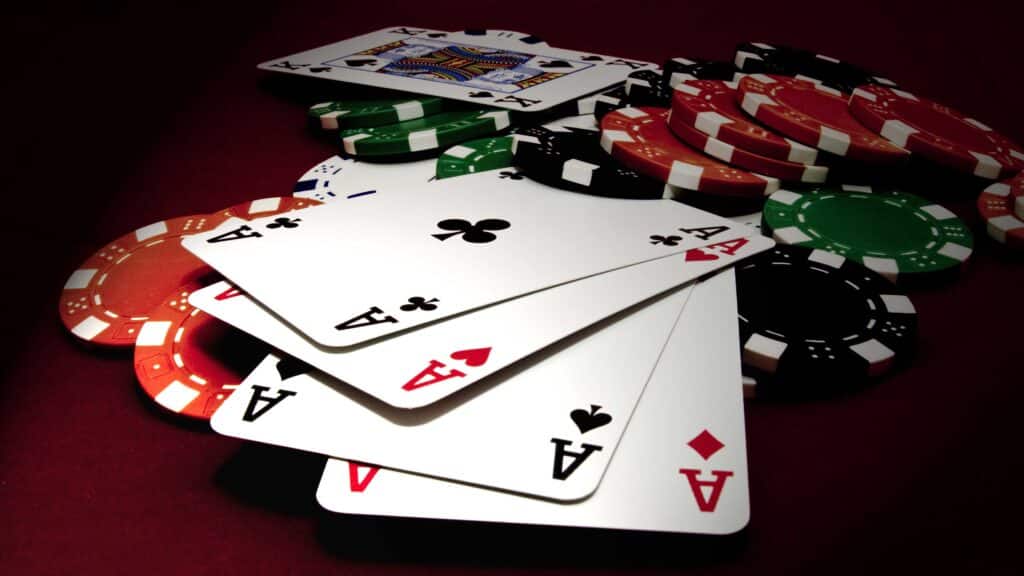Blackjack is one of the most popular casino games around, and it’s known for its mix of strategy, luck, and skill. While the game itself is relatively simple, many seasoned players use a technique known as card counting to improve their chances of winning. Card counting is a strategy that allows players to track the ratio of high to low cards remaining in the deck, and it can significantly influence betting decisions. In this beginner’s guide, we will explore what card counting is, how it works, and how you can apply it to your blackjack game. Whether you’re a new player looking to enhance your skills or an experienced gambler aiming to improve your edge, this guide will give you a solid understanding of card counting in blackjack.
What is Card Counting?
Card counting is a strategy used by blackjack players to determine when the odds are in their favor. The premise behind card counting is that the ratio of high to low cards in the deck can impact the likelihood of certain outcomes, like getting a blackjack (an ace and a 10-value card) or the chances of the dealer busting. By keeping track of which cards have been dealt, card counters aim to bet more when the deck is rich in high cards, and bet less when it’s full of low cards.
While card counting itself is not illegal, casinos often watch for players who are suspected of counting cards and may ask them to leave or ban them from playing. Nonetheless, mastering the basics of card counting can still give you a significant edge over the house.
How Does Card Counting Work?
In order to understand card counting, you first need to know how the deck is structured. In a standard deck of cards, there are four suits: hearts, diamonds, clubs, and spades. Each suit contains thirteen ranks: ace, 2, 3, 4, 5, 6, 7, 8, 9, 10, jack, queen, and king. In blackjack, face cards (jack, queen, king) are valued as 10, and the ace can be worth either 1 or 11, depending on the situation.
Card counting systems rely on assigning a value to the cards that have been dealt. The most commonly used card counting system is the Hi-Lo system, which assigns the following values to the cards:
- 2, 3, 4, 5, and 6: +1 point
- 7, 8, and 9: 0 points (neutral)
- 10, Jack, Queen, King, and Ace: -1 point
The idea behind this system is that when there are more high cards (10, Jack, Queen, King, Ace) left in the deck, the player has a greater chance of drawing a blackjack or beating the dealer. When there are more low cards (2 through 6), the dealer is more likely to bust, which works in the player’s favor. By keeping track of the "running count" (the cumulative total of the card values), players can adjust their betting strategy based on the current deck composition.
Understanding the Running Count
To start counting cards using the Hi-Lo system, you’ll need to keep track of the running count. As cards are dealt, you simply add or subtract based on the value assigned to each card. For example, if the first two cards dealt are a 5 and a Queen, the running count would be +1 (for the 5) and -1 (for the Queen), resulting in a running count of 0.
Here’s a simple example of how the running count works:
- First hand: You see a 2, a King, and a 4. The running count is +1 (for the 2) + (-1) (for the King) + 1 (for the 4), giving a total of +1.
- Second hand: You see a 3, a 6, and an Ace. The running count is +1 (for the 3) +1 (for the 6) + (-1) (for the Ace), giving a total of +1.
As the running count increases, it indicates that more high cards are left in the deck, which is advantageous for the player. A negative running count, on the other hand, suggests that the deck is rich in low cards, and the house has an edge. The goal is to bet higher when the running count is positive and lower when it is negative.
The True Count: Adjusting for Multiple Decks
In many casinos, blackjack is played with multiple decks of cards (usually 6 or 8 decks). The running count alone doesn’t give a clear picture of the deck’s composition when multiple decks are in play. To account for this, card counters use the true count, which adjusts the running count based on the number of decks remaining in the shoe.
To calculate the true count, simply divide the running count by the number of decks left in the shoe. For example, if the running count is +12 and there are 3 decks remaining, the true count would be:
True Count = Running Count / Decks Remaining
True Count = +12 / 3 = +4
A higher true count indicates that the deck is favorable to the player, and this is when you should increase your bets. On the other hand, a low or negative true count suggests that the deck is more favorable to the dealer, and you should bet minimally.
Betting Strategy: When to Increase or Decrease Bets
One of the core principles of card counting is adjusting your bets based on the true count. Here’s a general guideline for how to approach betting:
- True Count +1 to +3: This is a neutral to slightly favorable deck. Stick with small to moderate bets.
- True Count +4 or higher: The deck is highly favorable to the player. This is the time to increase your bets, as the likelihood of getting a blackjack or winning hands increases significantly.
- True Count 0 or negative: The deck is unfavorable to the player. It’s best to either bet the minimum or even walk away from the table to avoid losing money.
Common Myths About Card Counting
Card counting is often misunderstood and surrounded by myths. Here are a few common misconceptions about counting cards in blackjack:
- Myth 1: Card counting is illegal. Card counting is not illegal. It is simply a strategy that some players use to improve their chances of winning. However, casinos reserve the right to remove players suspected of counting cards.
- Myth 2: Card counting requires a photographic memory. You don’t need a photographic memory to count cards effectively. With practice, you can track the running count using simple math and focus. Many players use a simple mental note system to track the cards as they are dealt.
- Myth 3: Card counters always win. While card counting can increase your odds, it doesn’t guarantee a win. Blackjack is still a game of chance, and you will face variance over the short term. Successful card counters must also have a solid understanding of basic blackjack strategy and bankroll management.
Practical Tips for Beginners
Now that you understand the basics of card counting, here are some practical tips for beginners who want to start applying the technique:
- Start with Single-Deck Games: If you’re just starting out, it’s easier to practice card counting in single-deck blackjack games, as there is only one deck to keep track of.
- Practice, Practice, Practice: Card counting requires practice to master. You can practice at home with a deck of cards, keeping track of the running count and practicing betting strategies. There are also apps and websites designed to help you practice card counting in simulated environments.
- Don’t Be Obvious: Casinos are on the lookout for card counters, so don’t make dramatic changes to your betting patterns. Gradually adjust your bets based on the true count, and avoid any sudden movements that could draw attention to your strategy.
- Bankroll Management: Like any form of gambling, card counting requires sound bankroll management. Be prepared for streaks of losses and always bet within your limits.
Conclusion
Card counting is a powerful tool that can give you a significant edge in blackjack, but it’s not without its challenges. While it’s not a foolproof method, learning how to count cards effectively can improve your chances of success at the table. With practice, patience, and a solid understanding of the basic rules of blackjack, you can start using card counting to your advantage. Just remember, while card counting can be a fun and rewarding strategy, it’s important to always play responsibly and within your means.



